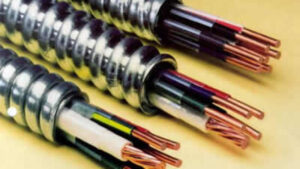OrientMCT
Conductors
Conductors play a crucial role in electrical systems as they are responsible for carrying electric current from one point to another. A conductor is a material with low electrical resistance, allowing the flow of electric charges. It is typically made of metals such as copper or aluminum due to their excellent conductivity properties.
Here are some key points about conductors:
Material selection: Copper and aluminum are the most commonly used materials for conductors due to their high electrical conductivity. Copper is preferred for its superior conductivity, whereas aluminum is chosen for its lightweight nature and cost-effectiveness.
Size and gauge: The size or gauge of a conductor determines its current-carrying capacity. Conductors with larger cross-sectional areas have lower resistance and can carry higher currents. The gauge of a conductor is typically specified by a numerical value, with a lower gauge indicating a larger size.
Insulation: To ensure safety and prevent electrical hazards, conductors are often insulated with a protective layer. Insulation materials, such as PVC (polyvinyl chloride) or XLPE (cross-linked polyethylene), provide electrical insulation and mechanical protection for the conductor. The choice of insulation material depends on factors such as voltage rating, temperature resistance, and environmental conditions.
Stranding: Conductors used in practical applications are often stranded, meaning they consist of multiple smaller strands of wire twisted together. Stranding enhances the flexibility of the conductor, making it easier to handle and install. It also helps prevent breakage and fatigue due to repeated bending or movement.
Resistance: Although conductors are designed to have low resistance, they still exhibit some resistance to the flow of current. The resistance of a conductor depends on factors such as its material, length, cross-sectional area, and temperature. The resistance is typically kept as low as possible to minimize power losses and ensure efficient transmission of electrical energy.
Current carrying capacity: The current-carrying capacity of a conductor is determined by its size, material, and the temperature rating of the insulation. It is important to select a conductor with the appropriate size and capacity to safely carry the expected current without exceeding its rated limits.
Overcurrent protection: To protect conductors from excessive current, overcurrent protection devices such as circuit breakers or fuses are used. These devices are designed to interrupt the flow of current when it exceeds a safe level, preventing damage to the conductor and associated equipment.
Understanding the properties and characteristics of conductors is essential for designing and installing electrical systems. Proper conductor selection, sizing, and installation are crucial to ensure efficient and safe operation of electrical circuits.

If you would like further information about this course or have any specific questions, please feel free to contact us directly or send us an email.!!!!!!!!
Get In Touch!
Contact us for a quote or in case of any urgent queries please send us an email on: [email protected]
we will get back to you right away!